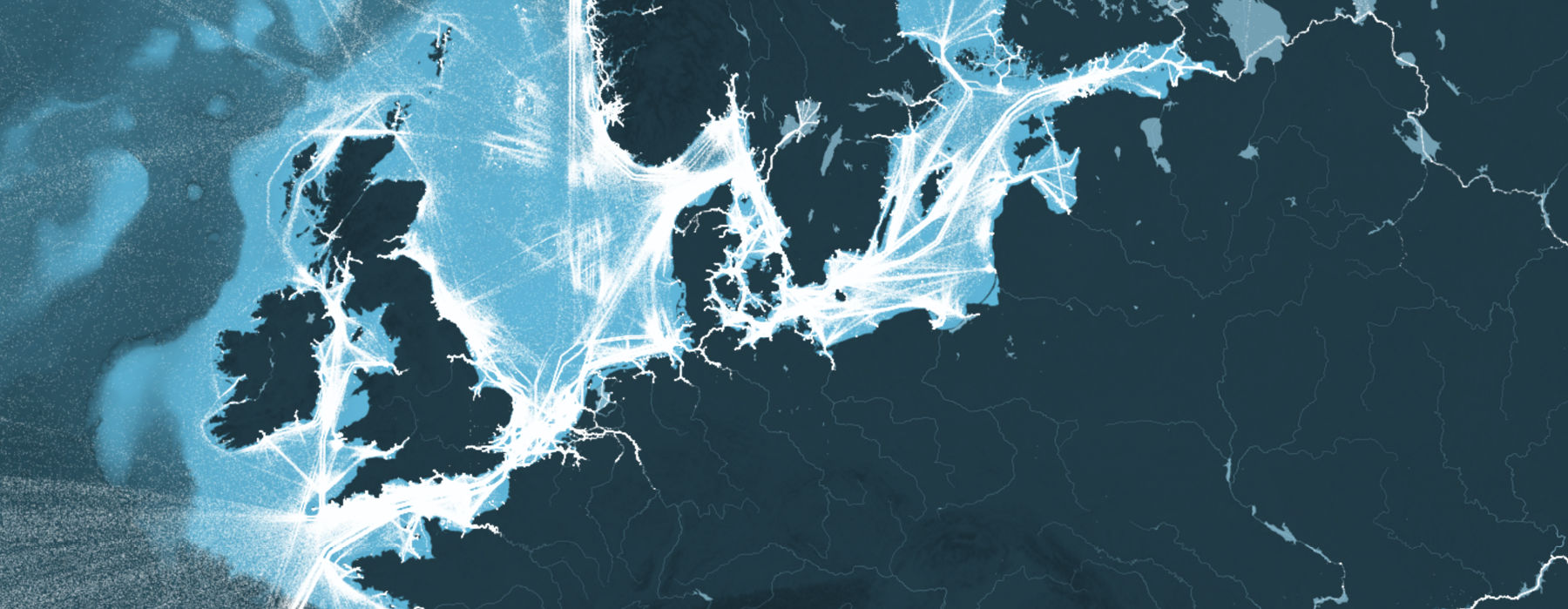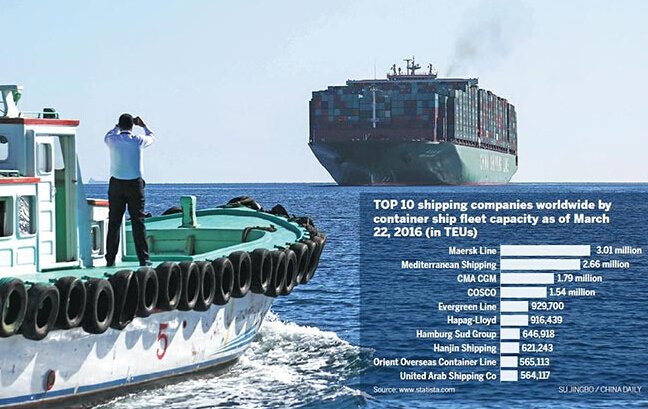What can I see?
You can see movements of the global merchant fleet over the course of 2012, overlaid on a bathymetric map.
You can also see a few statistics such as a counter for emitted CO2 (in thousand tonnes) and maximum freight carried by represented vessels (varying units).
Global shipping via 250 million data points
What can I do?
You can pan and zoom in the usual ways, and skip back and forward in time using the timeline at the bottom of the screen.
The controls at the top right let you show and hide different map layers: port names, the background map, routes (a plot of all recorded vessel positions), and the animated ships view.
There are also controls for filtering and colouring by vessel type.
The merchant fleet is divided into five categories, each of which has a filter and a CO2 and freight counter for the hour shown on the clock.
The ship types and units are as follows:
- Container (e.g. manufactured goods): number of container slots equivalent to 20 feet (i.e. a 40-foot container takes two slots)
- Dry bulk (e.g. coal, aggregates): combined weight of cargo, fuel, water, provisions, passengers and crew a vessel can carry, measured in thousand tonnes
- Tanker (e.g. oil, chemicals): same as dry bulk
- Gas bulk (e.g. liquified natural gas): capacity for gases, measured in cubic metres
- Vehicles (e.g. cars): same as dry bulk
In some cases this is because there are ships navigating via canals or rivers that aren’t visible on the map.
Generally, though, this effect is an artefact of animating a ship between two recorded positions with missing data between, especially when the positions are separated by a narrow strip of land.
We may develop the map to remove this effect in the future.
Interactive map and explore the movements of the global fleet
Who created this map?
The map was created by Kiln and the UCL Energy Institute (UCL EI)
Visualization: Duncan Clark & Robin Houston from Kiln
Research & data: Julia Schaumeier & Tristan Smith from the UCL EI
Music: Bach Goldberg Variations played by Kimiko Ishizaka
How was the map created?
UCL EI took data showing location and speed of ships and cross-checked it with another database to get the vessel characteristics, such as engine type and hull measurements.
With this information they were able to compute the CO2 emissions for each observed hour, following the approach laid out in the Third IMO Greenhouse Gas Study 2014.
Kiln took the resulting dataset and visualized it with WebGL on top of a specially created base map, which shows bathymetry (ocean depth), based on the GEBCO_2014 Grid (version 20150318), as well as continents and major rivers from Natural Earth.
The outlines of continents can be visualized by shipping routes
Our data sources for shipping positions are exactEarth for AIS data (location/speed) and Clarksons Research UK World Fleet Register (static vessel information).
We are very grateful to our funders, the European Climate Foundation.
Links :



WEforum : This map shows the scale and complexity of the world’s shipping routes
ReplyDeleteBusiness Insider UK : This incredible map shows the movement of every ship on the planet
ReplyDeleteGeographical : Shipping maps win at the Information Is Beautiful Awards
ReplyDeleteVox : This is an incredible visualization of the world's shipping routes
ReplyDelete